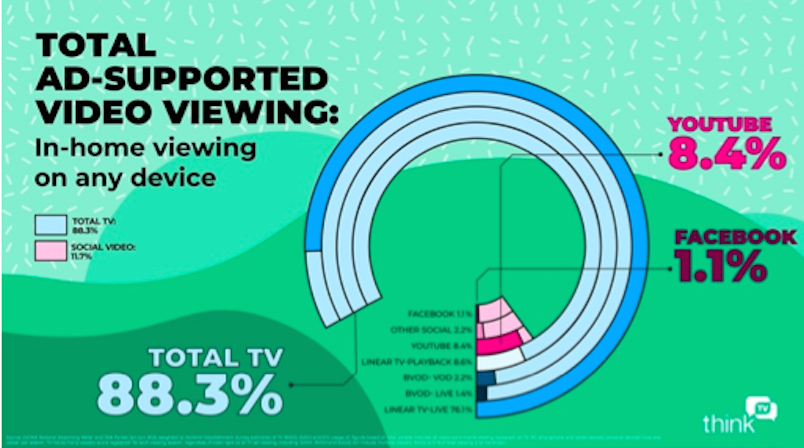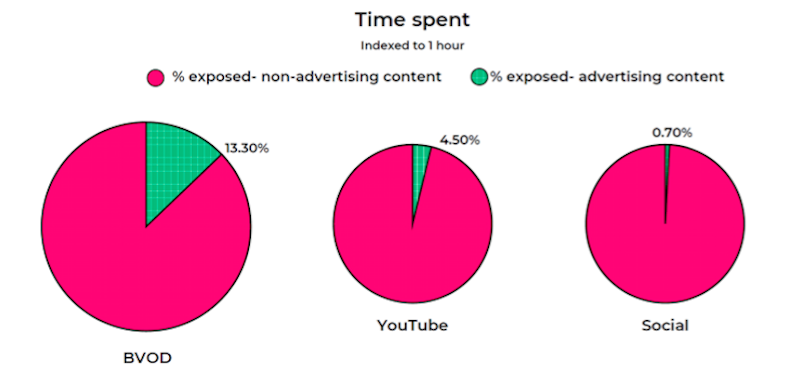More misinformation problems: There’s a place for all platforms in the media mix, including TikTok, but choice needs to be based on facts
Audiences are undoubtedly fragmenting but recent claims that TikTok is swallowing up to a third of video viewing, at least among its users, might be a little wide of the mark. Kim Portrate can't – and won't – let that go unanswered.
In the race to secure advertising dollars some channels are cheekier than others – and getting cheekier by the day. The one that caught my eye recently came from the newest kid on the social media block, TikTok.
At the platform’s recent event, the business made a few interesting claims, none more headline-grabbing than the suggestion scrolling through TikTok has gobbled up a third of TV and streaming video viewership amongst users of its platform.
It’s bold, and yes, it did get all the attention it was intended to. But what is most intriguing is that there is no verifiable data to support it. The evidence is, well, seemingly non-existent.
Owned by Chinese company ByteDance, TikTok is a walled garden of data with Aussie GM Brett Armstrong making clear the company does not release user numbers, time spent on platform, employee numbers or salary information, for that matter; just in case you were wondering how much your former colleagues over there are raking in.
Armstrong puts usage on the platform at around 7 to 10 million but without independent third-party verification, we’re just taking his word. Likewise, the suggestion Aussies are spending a “movie’s worth of time” on the platform every day.
So how did they come up with these figures? Let’s try and crunch the numbers.
According to data from We Are Social Digital 2022 report, globally, users spend around 850 minutes a month on the platform, that’s around 14 hours. Which breaks down to about 28 minutes a day. Not quite a “movie’s worth” of time, and a drop in the ocean compared to OzTAM-verified data which shows linear TV viewers spend an average of 104 minutes a day watching TV in metro markets and 126 minutes regionally.
OzTAM-verified data further throws these claims into question and can best be summarised by this chart:

Some alternative facts, via OzTam data.
Using data from OzTAM panel homes, we can see TikTok, Facebook, Instagram, Snapchat and Twitch command just 3.3 per cent of in-home video viewing compared to TV which accounts for 88.3 per cent of video consumption in the home: the place where Australians spent the vast amount of their downtime.
And if you’re wondering whether that small sliver of audience has grown exponentially in a short period of time, it hasn’t. The same research conducted a year ago pegged in-home social video consumption at 3.2 per cent. It has risen just 0.1 per cent in 12 months.
When weighing up these claims, advertisers should also remember that time spent on a platform is different to the amount of time users are engaging with advertising. Independent third-party research shows that for every hour someone spends on TikTok, only 0.7 per cent of that time provides advertising exposure.

More alternative data, via OzTam.
Given all this, TikTok’s maths looks to be as creative as the content producers on the platform.
Having said that, there’s no doubt video audiences continue to fragment. The incredible growth of Broadcaster Video on Demand (BVOD) viewership shows that to be the case with consumption up 20.7 per cent in the last 12 months. That’s once again according to OzTAM data.
And while the purported advertised strength of TikTok is its youth audience, let’s not forget that TV attracts 38 minutes per day of 16-to-39-year-old viewing in metro markets, 40 minutes in regional areas, and over an hour per day in households with subscription TV. Again, that’s all sourced from publicly available OzTAM data.
Whenever we challenge curious statements in the market like these, the inevitable response is that of course we would say this; we’d much rather advertisers spend their entire media budgets with us. And while we wouldn’t send the cheques back if they did, the reality is that great campaigns rely on a variety of media platforms working together.
The perfect combination of channels is a boon for brands big and small. PepsiCo ANZ CMO Vandita Pandey said as much at the TikTok event citing the example of a moment on Married at First Sight when a bride could smell Twisties on her new groom’s breath.
Pandey said: “We quickly capitalised on this and teased this concept of launching mint-flavoured Twisties…. It actually ended up making the national news. I think we generated over 100 million earned impressions.”
A cultural moment created on TV is parlayed into social media that then reaches the pinnacle of the national news. On TV.
Undoubtedly, there’s a place for everyone in the media mix. But the facts show TikTok may be laying claim to a larger piece of real estate than it genuinely commands.
So, before you look to increase your media budget based on a platform’s self-reported figures, do your research. And follow Pandey’s lead by applying the principles of test and learn.
Do it right and your campaign might also make the national news and generate millions in positive earned media. And who wouldn’t want that?
